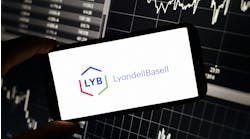Many firms have tempered their enthusiasm for business-to-business (B2B) e-commerce during the past two years, largely as a result of the poor returns they received on their e-business investments and the bursting of the dot-com bubble. Instead of embarking on a full-blown B2B implementation, some firms now are taking a more cautious approach by sampling certain B2B components.
E-sourcing advantages
E-sourcing is one such component that has gained significant attention. Firms are reaping benefits from the use of e-sourcing applications in both their direct and indirect goods and services. Some typical e-sourcing applications include collaborative project management, knowledge management, RFx management* and reverse auctions.
A recent Forrester Research Inc. study found that 49 percent of organizations buying more than $1 billion per year in products/services used an online auction, with most of these groups indicating increased usage of these types of venues. In the chemical industry, firms such as Eastman Chemical, Marathon Oil, Omya AG and others have experienced significant success with reverse auctions.
Typically, firms implement an e-sourcing application to reduce cost or enhance efficiencies. E-sourcing applications also are gaining in popularity because many applications do not require significant investments in new equipment or systems integration. They can be set up in a matter of weeks or days instead of months, require a smaller investment and bring a faster return on that investment.
Current market changes also have driven down the cost. The vast number of solution providers, coupled with the hesitancy of current buyers to make major investments, have forced solution providers to offer buyers three- to six-month pilots in the hope that the customer will be impressed by the results and commit to a long-term agreement.
E-sourcing initiatives can help firms to reduce sourcing cycle times by more than 25 percent and cut time-to-market cycles by 10 percent to 15 percent. They provide access to better-quality inputs and a more responsive supply base.
The results already can be seen in some chemical companies. For example, by e-sourcing $50 million of goods and services, Marathon Oil identified potential savings of 17 percent. Eastman Chemical's e-sourcing initiative has allowed the firm to locate cheaper suppliers and negotiate special terms with suppliers. Another chemical company that has been using reverse auctions for all applicable goods achieved double-digit savings from every auction event conducted to date.
Overcoming challenges
It should be noted that manufacturers cannot achieve these results without overcoming some challenges. Like traditional sourcing, e-sourcing requires significant up-front work to prepare requests for quotes and proposals. Reverse auctions require an investment in time to identify and prequalify suppliers. Finally, the use of e-sourcing applications requires behavior changes on the part of sourcing personnel.
To mitigate these challenges and maximize the benefits of their e-sourcing endeavors, chemical firms need to take the following steps:
Evaluate the firm's sourcing process, with the intent on leveraging the spending, rationalizing the supply base and standardizing the processes of the entire firm to achieve maximum savings and efficiencies.
Obtain top-level support to address the change management implications of an e-sourcing initiative.
Develop a solid understanding of the supplier's industry.
Identify a significant number of qualified suppliers for online bidding events.
Review the implementation and compliance of award processes of each sourcing project.
Ensure bids are conducted with transparency and integrity.
With the abundance of e-sourcing solution providers ," Frictionless Commerce, FreeMarkets, Procuri, PurchasePro, Commerce One Source and Oracle Sourcing, to name a few ," chemical companies are able to choose from several e-sourcing products. When selecting an e-sourcing solution provider, firms should look for one that is flexible, has knowledge of the chemicals industry and has access to viable global suppliers.
Flexibility is important because chemical companies buy more than just base raw materials. A good e-sourcing application should be able to accommodate the sourcing of everything from basic commodities to engineered equipment. Chemical industry knowledge is essential because it enables the solution provider to proficiently structure sourcing events, facilitate preparation of requests for quotes and proposals, locate and screen suppliers and deliver results. Finally, access to viable global suppliers requires the solution provider not only to provide the customer names of potential suppliers, but also to provide knowledge of suppliers' production facilities and experience with the products the buyer intends to source.
By considering the critical success factors and addressing the challenges, several chemical firms have reaped significant benefits from their e-sourcing endeavors. Selecting the right solution provider and implementation process has allowed these firms to gain a significant return on their e-sourcing investments in a short time. As firms continue to reap these successes, the popularity of e-sourcing applications will continue to rise. CP
*Simultaneous request for information (RFI) and request for proposal/quotation (RFP/RFQ)
Cooks is a senior consultant with Deloitte Consulting's Stamford, Conn., office. He can be reached at [email protected] or (203) 905-2811.

